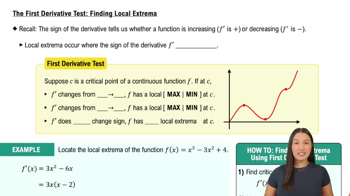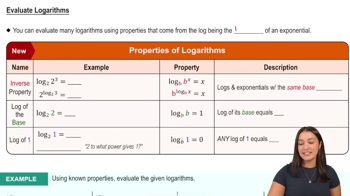Increasing and decreasing functions. Find the intervals on which f is increasing and the intervals on which it is decreasing.
f(x) = tan⁻¹ (x/(x²+2))
 Verified step by step guidance
Verified step by step guidance Verified video answer for a similar problem:
Verified video answer for a similar problem:



 5:58m
5:58mMaster Finding Extrema Graphically with a bite sized video explanation from Patrick
Start learning